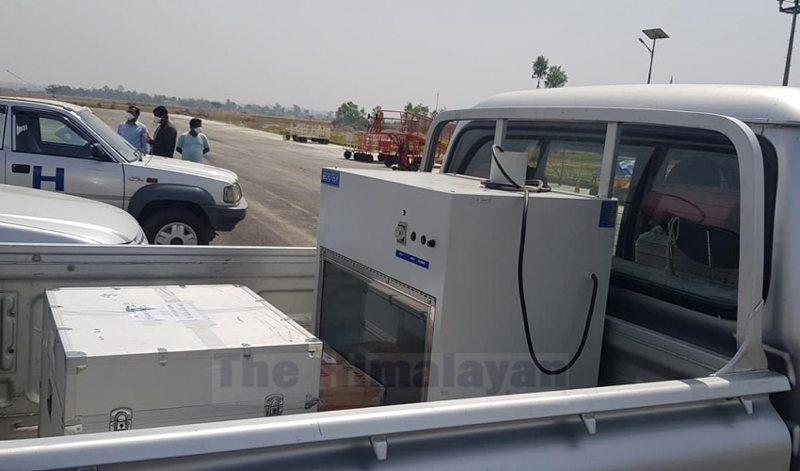Health experts for more polymerase chain reaction tests
Kathmandu, April 18
Health experts have said the polymerase chain reaction method should be preferred for early detection and isolation of COVID-19 patients rather than the rapid diagnostic test.
RDT detects the presence of antibodies in the blood of COVID-19 suspects.
“The sensitivity of the rapid diagnostic test depends upon the time when the blood of the patient is taken. We are also not sure of how many false negative or false positive reports the RDT gives us,” said a doctor preferring anonymity.
The country has already seen 31 COVID-19 cases, of which three patients have been discharged. With the number of cases surging, the government has been using rapid diagnostic test kits.
According to World Health Organisation, majority of patients develop antibody response only in the second week after onset of symptoms. “When the RDT test is done, it will already be late as there are chances of the person infecting others. The results of RDT should not be accepted as final. RDT should be used only for surveillance,” said Epidemiologist and public health expert Dr Sujan Marahatta.
WHO does not recommend the use of antibody-detecting rapid diagnostic tests for patient care, but encourages continuation of work to establish their usefulness in disease surveillance and epidemiological research. Health experts, therefore, say the government should increase the number of PCR tests.
“The sensitivity of RDT kit depends upon when the blood is taken. If the blood is taken within five to seven days of infection then sensitivity is 30 per cent. If it is taken within seven days to 14 days, sensitivity is 50 per cent. If the sample is taken from 15 days to 21 days of infection then sensitivity is 83 per cent.
PCR is more reliable. The RDT antibody test should be done usually after completing 14 days of quarantine. The PCR has sensitivity of 90 per cent when we combine nasal and throat swabs,” said Dr Shravan Kumar Mishra, virologist at National Public Health Laboratory.
“A negative RDT result doesn’t mean there is no infection. If there is a negative RDT report but if the person is in contact with a coronavirus affected person then RDT should be done again,” said Dr Mishra.
A protocol of the health ministry explains, “If the test was done by RDT repeat test using PCR only for positive cases. If test is negative but symptoms persist, then PCR is recommended.”
“If antibody has not been developed then the PCR will show positive result, but if the antibody has developed then the RDT will show positive result. The sample of persons in close contact with an infected person should be tested by PCR,” Dr Mishra said.
According to the health ministry, a total of 19,454 RDT have been done till now. “Currently we are testing suspected cases using PCR tests. Though we do not repeat the RDT, we will look into the situation and address it accordingly,” said Dr Khem Bahadur Karki, consultant at the Ministry of Health and Population.
“The rapid diagnostic test kit which we have been using has not been compared with RDTs of other companies. But the government had decided to use the kit as the validity test of the RDT was done in India in the National Institute of Virology, Pune, which is certified by the World Health Organisation,” said Dr Mishra.
A version of this article appears in e-paper on April 19, 2020 of The Himalayan Times.






